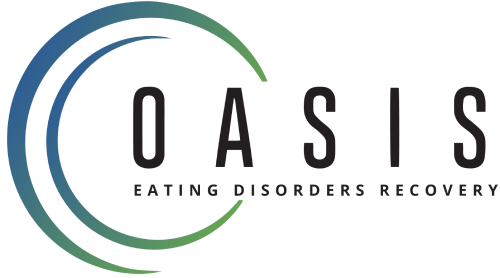At Oasis Eating Recovery, we use Cognitive Behavioral Therapy (CBT) as a central part of our approach to treating eating disorders. Whether someone is struggling with anorexia, bulimia, ARFID, or emotional eating, CBT helps uncover the underlying thought patterns that contribute to unhealthy behaviors around food and body image. This therapy doesn’t just focus on the symptoms; it helps individuals understand what drives them and teaches practical tools to create lasting change.
Located in the heart of the San Joaquin Valley, our Fresno-based treatment programs offer a compassionate space where healing begins with understanding. This page is here to help you learn how CBT works, why it’s effective for eating disorders, and how we integrate it into the care we provide. If you or a loved one is exploring options for treatment, we hope this gives you a clearer picture of what recovery can look like and how CBT can help make that journey possible.

Cognitive Behavioral Therapy (CBT) is a structured, evidence-based approach that focuses on how thoughts, emotions, and behaviors are connected. It helps people recognize unhelpful thinking patterns and develop healthier ways to respond to them. When applied to eating disorders, CBT allows individuals to explore beliefs about food, body image, and self-worth that may be fueling disordered behaviors. The goal is to build more flexible thinking and supportive habits that lead to lasting change.
A more specialized version of this therapy, called CBT-E or Enhanced Cognitive Behavioral Therapy, was developed specifically for eating disorders. Research shows that CBT-E is highly effective across a wide range of diagnoses, including anorexia, bulimia, and OSFED. It addresses the core issues that many eating disorders share, such as perfectionism, fear of weight gain, or rigid food rules. CBT-E is also adaptable for different levels of care, from outpatient therapy to more structured treatment programs. At Oasis Eating Recovery, we use CBT-E throughout our programs to give each person a personalized path toward recovery that supports real, meaningful progress.
Cognitive Behavioral Therapy is one of the most effective treatments for eating disorders because it targets the root causes behind harmful behaviors. Rather than focusing solely on food or weight, CBT helps individuals understand the deeper thought patterns and emotional triggers that influence how they eat, think, and feel. By making these patterns visible and changeable, CBT gives people the tools to move toward a healthier, more balanced life.
Here are some of the key ways CBT helps with eating disorders:
CBT helps individuals recognize the automatic, often critical thoughts they have about food, their bodies, or their self-worth. By bringing these thought patterns into awareness, people can begin to question and replace them with more balanced, compassionate perspectives that support recovery instead of undermining it.
Many eating disorders are fueled by a need to cope with emotional distress. CBT teaches effective, non-destructive alternatives to behaviors like restriction, bingeing, purging, or using food to manage emotions. These coping skills help individuals respond to stress in ways that are aligned with their health and recovery goals.
Strong emotions like anxiety, guilt, shame, or sadness often trigger disordered eating behaviors. CBT provides tools for managing these emotions in healthier ways, allowing individuals to feel more in control without needing to turn to food or avoidance as a coping mechanism.
One of the strengths of CBT is its focus on building practical, sustainable tools that last beyond treatment. Individuals learn strategies they can continue using in everyday life to maintain progress, prevent relapse, and stay connected to their values and goals.

Recovery through CBT is a gradual process, but it’s built on steady, intentional progress. Each phase of treatment is designed to help individuals gain insight, learn new skills, and apply those tools in real-life situations. At Oasis Eating Recovery, we use both individual and group CBT sessions to support each person’s unique path. While every recovery journey is different, here’s what a general timeline might look like for someone in treatment with us.
During the early phase of treatment, the focus is on creating a sense of safety and trust, both with the therapist and within the group. Individuals begin learning the basics of CBT—how thoughts, emotions, and behaviors are connected—and start identifying the specific patterns that contribute to their eating disorder. It’s a time for self-discovery and laying the foundation for change.
Once those patterns are clearer, the next step is practicing new ways of responding. Clients learn tools to regulate emotions, manage stress, and shift unhelpful thoughts. In both individual and group therapy, there’s an emphasis on building healthier coping strategies to replace restriction, bingeing, purging, or emotional eating. Progress often becomes more noticeable during this phase.
By this point, individuals start using their CBT skills outside of the therapy room. The focus shifts toward real-world application—navigating meals, relationships, and challenges while staying grounded in recovery. Therapists work closely with clients to problem-solve setbacks and reinforce growth, helping them feel more confident and capable.
After the initial 12 weeks, many individuals continue in CBT as part of a longer-term plan. This stage often includes deeper work around self-esteem, identity, and maintaining progress. Clients focus on recognizing early signs of relapse, strengthening support systems, and staying connected to their recovery goals. Ongoing CBT support can make a meaningful difference in sustaining recovery over time.
Healing begins with understanding—and with the right support, that understanding can grow into lasting change. At Oasis Eating Recovery, we use the power of CBT to help you untangle the thoughts that hold you back and build the tools that carry you forward. Whether you’re just beginning or continuing your journey, our Fresno team is here to walk beside you. Reach out today and take the first step toward a life rooted in strength, clarity, and self-compassion.
We know that asking for help takes courage. Getting in touch is the first step. We’re here for you, no matter what. Once submitted, our admissions team will be in touch within 24 hours.
Or call us directly to get started: (559) 245-6203
Connect with our admissions team over the phone for a confidential conversation to understand your needs and goals.
Together, we’ll determine the level of care that best supports your recovery journey.
We create a comprehensive treatment plan to ensure continued healing and support with group therapy, nutrition, body image groups, individual/family sessions.

I will be back soon